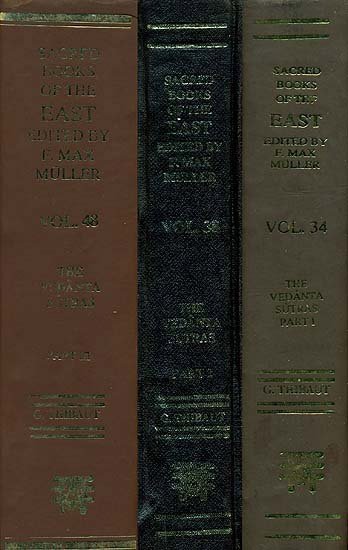Brahma Sutras (Ramanuja)
by George Thibaut | 1904 | 275,953 words | ISBN-10: 8120801350 | ISBN-13: 9788120801356
The English translation of the Brahma Sutras (also, Vedanta Sutras) with commentary by Ramanuja (known as the Sri Bhasya). The Brahmasutra expounds the essential philosophy of the Upanishads which, primarily revolving around the knowledge of Brahman and Atman, represents the foundation of Vedanta. Ramanjua’s interpretation of these sutras from a V...
Sutra 3.3.3
3. For (the śirovrata) concerns the mode of the study of the Veda; also on account of (that rite) being a heading in the samācāra; and the restriction is like that of the libations.
What the text says as to a restriction connected with the 'vow of the head,' does not intimate a difference of vidyās. For that vow does not form part of the vidyā. The restriction refers only to a peculiarity of the study of the Veda on the part of the Ātharvaṇikas, being meant to establish that they should possess that special qualification which the rite produces; but it does not affect the vidyā itself. This is proved by the subsequent clause, 'a man who has not performed that rite may not read the text,' which directly connects the rite with the studying of the text. And it is further proved by the fact that in the book of the Ātharvaṇikas, called 'sāmācara, 'that rite is referred to as a rite connected with the Veda (not with the special vidyā set forth in the Muṇḍaka), viz. in the passage, 'this is explained already by the Veda-observance' (which extends the details of the śirovrata, there called veda-vrata, to other observances). By the knowledge of Brahman (referred to in the Muṇḍaka-text 'let a man tell this science of Brahman to those only,' etc.), we have therefore to understand knowledge of the Veda in general. And that restriction is 'like that of the libations'—i.e. it is analogous to the restriction under which the sava-libations, beginning with the Saptasūrya-libation, and terminating with the Śataudana-libation, are offered in the one fire which is used by the followers of the Atharvan, and not in the ordinary three fires.
